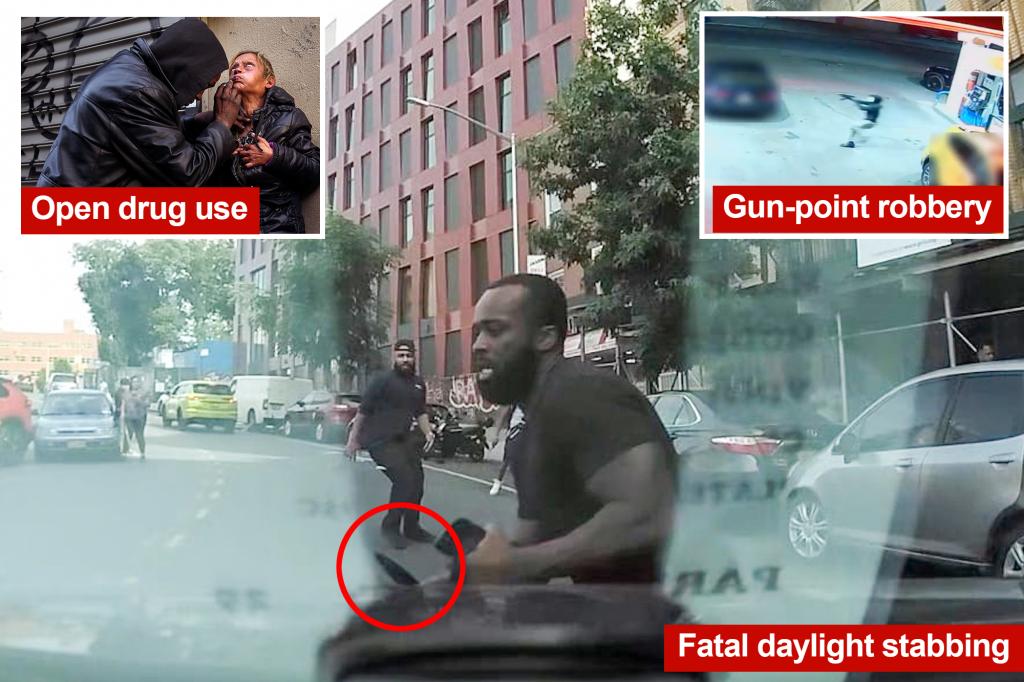The 46th Precinct in the Bronx, encompassing Fordham, University Heights, Morris Heights, and Mount Hope, experienced a devastating surge in violent crime in 2024, leaving residents living in fear and prompting calls for increased police presence and resources. The precinct witnessed a staggering 107.7% increase in homicides compared to the previous year, with 27 lives tragically lost. The overall crime rate also saw significant increases in nearly every category, including rape, robbery, felony assault, burglary, and grand larceny, painting a grim picture of a community grappling with escalating violence. The pervasive sense of insecurity is palpable among residents, who express a constant fear for their safety, uncertain if they will return home unharmed each day. The escalating violence has shattered the peace of mind for many, forcing them to navigate their daily lives with a heightened sense of caution and anxiety.
The tragic stories of victims underscore the brutal reality of the violence plaguing the 46th Precinct. Among them was Ronald Gomez-Mesa, a 29-year-old father eagerly anticipating his daughter’s third birthday, who was fatally stabbed after being caught in the crossfire of a seemingly minor traffic dispute. His senseless death devastated his family, leaving them heartbroken and highlighting the random nature of the violence. Adding to the grim toll was Leslie Sanchez, a 56-year-old fruit vendor, brutally beaten to death with a baseball bat in an unprovoked attack while working. The severity of his injuries necessitated his family covering his head with a fedora during his funeral, a chilling testament to the brutality he endured. These are but a few examples of the lives lost and irrevocably altered by the wave of violence sweeping through the precinct.
The surge in crime has sparked a debate over its underlying causes and potential solutions. Law enforcement experts and officers within the 46th Precinct point to several contributing factors, including bail reform, a dwindling police force due to officers leaving the department, and a lack of visible police presence on the streets. The limited number of patrol cars, sometimes as few as two or three for the entire precinct on some nights, leaves residents feeling vulnerable and criminals emboldened. This shortage of officers makes it difficult to effectively patrol the vast area covered by the precinct, creating an environment where criminals feel less deterred from carrying and using weapons. The lack of a consistent police presence further erodes the sense of security within the community.
Community leaders and residents echo the call for increased police resources and a more proactive approach to addressing the root causes of the violence. Councilman Oswald Feliz, whose district overlaps with the 46th Precinct, has been vocal about the need for more officers in the area, highlighting the devastating impact of the violence on families. He emphasizes that the rising crime statistics represent not just numbers, but real lives and families traumatized by the violence. Residents like Gabby Almonte, who expressed her anxiety about simply walking the streets, underscore the pervasive fear gripping the community. This fear permeates daily life, impacting residents’ ability to feel safe in their own neighborhoods. The urgency of the situation demands a comprehensive response that addresses both the immediate need for increased security and the long-term challenges contributing to the violence.
In response to the alarming crime statistics, Mayor Eric Adams launched a pilot program called “Every Block Counts,” which aims to deploy multi-agency resources to specific high-crime areas within the 46th Precinct and another Brooklyn precinct. Initial reports from the program touted a decrease in shootings along targeted thoroughfares, suggesting a potential positive impact. However, some officers within the precinct remain skeptical, viewing the program as another temporary fix that fails to address the deeply rooted issues driving the violence. They argue that long-standing promises of increased services and resources have gone unfulfilled, leaving a sense of cynicism and distrust among those on the front lines. The long history of crime in the area, coupled with unfulfilled promises, has fostered skepticism regarding the effectiveness of short-term initiatives.
The escalating violence in the 46th Precinct underscores the complex challenges facing the community and the urgent need for a multifaceted approach to address the root causes of crime. While increased police presence and targeted initiatives may offer some immediate relief, lasting change requires a comprehensive strategy that tackles issues such as poverty, lack of opportunity, and the proliferation of illegal firearms. The stories of victims like Ronald Gomez-Mesa and Leslie Sanchez serve as a stark reminder of the human cost of violence and the urgent need for effective solutions. The fear and anxiety gripping the community demand a sustained commitment from city officials, law enforcement, and community leaders to work together to create a safer and more secure environment for all residents. The road to restoring peace and security in the 46th Precinct requires not only addressing the immediate symptoms of violence but also investing in long-term solutions that address the underlying societal factors contributing to the problem.

